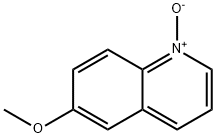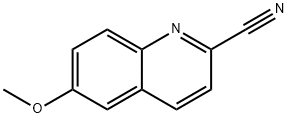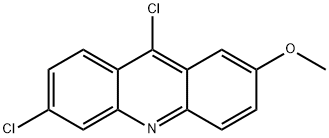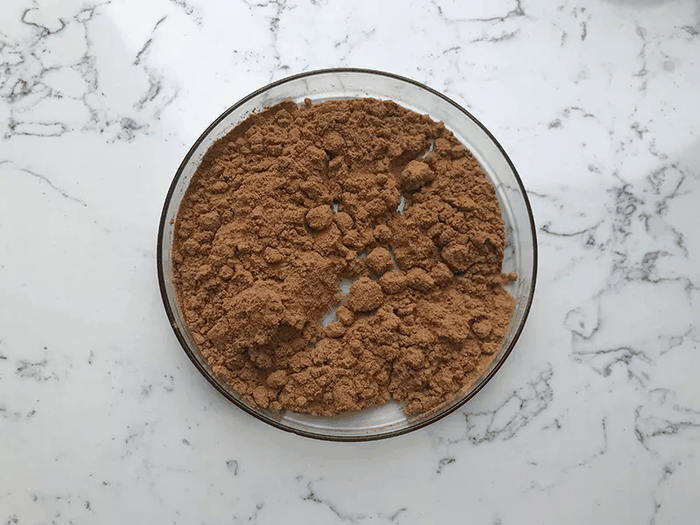6-Hydroxyquinoline
Synonym(s):6-Hydroxyquinoline;6-Quinolinol
- CAS NO.:580-16-5
- Empirical Formula: C9H7NO
- Molecular Weight: 145.16
- MDL number: MFCD00047611
- EINECS: 209-454-6
- SAFETY DATA SHEET (SDS)
- Update Date: 2025-02-23 21:28:46

What is 6-Hydroxyquinoline?
Chemical properties
white to light yellow crystal powder
The Uses of 6-Hydroxyquinoline
6-Hydroxyquinoline was used in synthesis of 2,6-substituted-benzo[d]thiazole analogs and 2,4-substituted-benzo[d]thiazole analogs.
Definition
ChEBI: A monohydroxyquinoline that is quinoline substituted by a hydroxy group at position 6.
General Description
6-Hydroxyquinoline is an ideal photoacid system for exploring excited-state proton transfer (ESPT) reactions. The excited-state proton transfer and geminate recombination of 6-hydroxyquinoline encaged in catalytic Na+-exchanged faujasite zeolites X and Y have been explored by measuring steady-state and picosecond time-resolved spectra.
Properties of 6-Hydroxyquinoline
| Melting point: | 188-190 °C (lit.) |
| Boiling point: | 264.27°C (rough estimate) |
| Density | 1.1555 (rough estimate) |
| refractive index | 1.4500 (estimate) |
| storage temp. | Keep in dark place,Inert atmosphere,Room temperature |
| solubility | DMSO (Slightly), Methanol (Slightly) |
| form | Powder |
| pka | 5.15, 8.90(at 20℃) |
| color | Beige to gray or brown |
| Water Solubility | almost insoluble |
| BRN | 113196 |
| CAS DataBase Reference | 580-16-5(CAS DataBase Reference) |
Safety information for 6-Hydroxyquinoline
| Signal word | Warning |
| Pictogram(s) |
 Exclamation Mark Irritant GHS07 |
| GHS Hazard Statements |
H315:Skin corrosion/irritation H319:Serious eye damage/eye irritation H335:Specific target organ toxicity, single exposure;Respiratory tract irritation |
| Precautionary Statement Codes |
P261:Avoid breathing dust/fume/gas/mist/vapours/spray. P264:Wash hands thoroughly after handling. P264:Wash skin thouroughly after handling. P271:Use only outdoors or in a well-ventilated area. P280:Wear protective gloves/protective clothing/eye protection/face protection. P302+P352:IF ON SKIN: wash with plenty of soap and water. P305+P351+P338:IF IN EYES: Rinse cautiously with water for several minutes. Remove contact lenses, if present and easy to do. Continuerinsing. |
Computed Descriptors for 6-Hydroxyquinoline
6-Hydroxyquinoline manufacturer
New Products
Tetrabutylammonium hydrogen sulfate 2,2,6-Trimethyl-4H-1,3-dioxin-4-one 4-Piperidinopiperidine tert-Butyl acetoacetate 4-BROMOMETHYLTETRAHYDROPYRAN 3-Hydroxyazetidine hydrochloride Diallylamine, 99% Calcium hydroxide, 95% Aluminum oxide, basic 2-Bromophenylacetonitrile, 97% L-tert-Leucine,97% N-Hydroxy-2-methylpropanimidamide 4-(3,4-Dichlorophenyl)-3,4-Dihydro-N-Methyl-1-(2H)-Naphthalenimine (Schiff Base) 2-AMINO-3,5-DIBROMO BENZALDEHYDE [ADBA] L-Glutamic Acid Dimethyl Ester Hcl 10-Methoxy-5H-dibenz[b,f]azepine 5-Cyanophthalide N, N-Carbonyldiimidazole (CDI) 3-Methoxybenzonitrile 4-Methoxybenzonitrile Dibenzoyl Peroxide Titanium Dioxide Chloral PentachlorobenzonitrileRelated products of tetrahydrofuran




![2-[(2-amino-5-methylph2-[(2-amino-5-methylphenoxy)methyl]-6-methoxy-8-aminoquinoline-n,n,n',n'-tetraacetic acid tetrapotassium saltenoxy)methyl]-6-methoxy-8-aminoquinoline-n,n,n](https://img.chemicalbook.in/CAS/GIF/73630-23-6.gif)



You may like
-
 580-16-5 6-Hydroxyquinoline 98%View Details
580-16-5 6-Hydroxyquinoline 98%View Details
580-16-5 -
 6-Quinolinol CAS 580-16-5View Details
6-Quinolinol CAS 580-16-5View Details
580-16-5 -
 6-Hydroxyquinoline CAS 580-16-5View Details
6-Hydroxyquinoline CAS 580-16-5View Details
580-16-5 -
 Ethyl-2-Chloroacetoacetate 609-15-4View Details
Ethyl-2-Chloroacetoacetate 609-15-4View Details
609-15-4 -
 CIS- BROMO BENZOATEView Details
CIS- BROMO BENZOATEView Details
61397-56-6 -
 609-15-4View Details
609-15-4View Details
609-15-4 -
![1-(6-Methylpyridin-3-Yl)-2-[4-(Methylsulfonyl)Phenyl]Ethanone [Ketosulfone] 99%](https://img.chemicalbook.in//Content/image/CP5.jpg) 1-(6-Methylpyridin-3-Yl)-2-[4-(Methylsulfonyl)Phenyl]Ethanone [Ketosulfone] 99%View Details
1-(6-Methylpyridin-3-Yl)-2-[4-(Methylsulfonyl)Phenyl]Ethanone [Ketosulfone] 99%View Details
221615-75-4 -
 27143-07-3View Details
27143-07-3View Details
27143-07-3
Statement: All products displayed on this website are only used for non medical purposes such as industrial applications or scientific research, and cannot be used for clinical diagnosis or treatment of humans or animals. They are not medicinal or edible.
